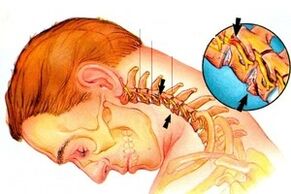
Diseases of the musculoskeletal system are one of the most common diseases on earth.Few people manage to avoid them completely, especially after 40 years, even if experts admit that the problems with the spine, the muscles and the joints have "younger" and very young young people complain more and more than pain.
The fault of this is the way of life, which has already become familiar to many: inactivity, prolonged stay in a position (very often behind gadgets and monitors), lack of physical activity.Consequently, the posture is disturbed, the salts and other harmful substances accumulate in the body, the functions of the musculoskeletal system are compromised and, consequently, the internal organs can be deformed.
Very often, osteochondrosis is found by these diseases, to which people are subject to both the older and older age and among the problems of osteochondrosis with the lumbosacral and cervical column.The second type of osteochondrosis, cervical, is an unpleasant and, moreover, progressive disease, without treatment, a lifestyle significantly worsened up to the disability.This means that it is necessary to recognize the symptoms of this disease in a timely manner and over time contact an orthopedist or vertebrologist for treatment.
It develops as cervical osteochondosis
If a person leads a sedentary lifestyle or, by virtue of his profession, he is in the same position for a long time, then the risk of meeting osteochondrosis is very high.With the development of the disease, the changes occur in the intervertebral discs, they are deformed and change their structure.
The intervertebral discs are located between the vertebrae, their task is to keep the spine, to make it flexible and durable.There are seven vertebrae in the neck, with the help of which the head is supported and rotated, the neck and so on are bent.The cervical vertebrae are found very close to each other, so they are injured and moved also by slight physical effort.The danger of the disease lies in the fact that the nerve terminations of the spinal nerves are affected, due to which the vases that provide the brain of the brain are affected.In turn, the brain does not receive vital substances and this can lead to the development of a number of other more serious diseases that can cause disabilities and even the patient's death.
There are many causes and development of cervical osteochondrosis.Among the most common and frequent reasons, the following can be distinguished:
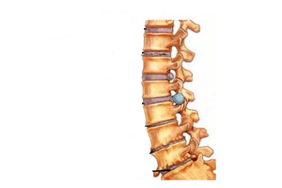
- Metabolism altered in the body, particularly in the cervical region, hormonal imbalance;
- salt deposition;
- low physical activity, sedentary lifestyle;
- long stay in a pose (on the computer, behind the wheel of the car and so on);
- improper nutrition;
- Excess weight;
- Lessons and bruises of the neck;
- Hypothermia of the body.
Osteocondrosis also occurs against the background of chronic diseases of the musculoskeletal system, such as scoliosis or rheumatism.
In addition, an osteochondrosis often leads a genetic predisposition of the body.
But whatever the causes, osteochondosis must be treated as soon as the first symptoms have appeared.
Signs of cervical osteochondosis
Osteochondrosis in this vertebral column does not always appear abruptly and unexpectedly.Very often it develops slowly and the symptoms intensify over time, their number increases.The more the vertebrae are damaged and the nerve roots are damaged, the more evident the signs are.
The first symptom that must be paid is the pain of different strength in the cervical column, which gives other parts of the body: the back of the head, the forehead, the ears, the forearm, the shoulder, the chest and so on.In case of pain, consult a doctor to determine if it is really osteochondrosis, which is often similar in symptoms with other diseases.
Other signs of osteochondosis
- Neck pain has improved from the loads or turns of the head;
- The patient feels numbness, burning or tingling in the limbs;
- headache and dizziness, a fault, the patient can complain of the dark and fly in the eyes, noise in the ears;
- With a strong turn of the head, it is probable fainting.
Osteocondrosis is also characteristic of cervical osteochondosis:
- violation of coordination;
- pain in the heart;
- Deterioration of vision and hearing.
Variety of osteochondrosis
Depending on the type of pinching of the nerve and the nature of the development of the disease, doctors distinguish different syndromes:
- spine syndrome;
- vertebral artery syndrome;
- Cardial syndrome.
Radice syndrome is a pinch of the first pairs of cervical nerve endings.The pains are felt in the neck, they are administered in a scapula, in the lower back, shoulder, forearm.
With the vertebral artery syndrome, the patient suffers from pulsating pain in the back of the head or temples or burning the pain in the neck, the back of the head, which improves the head, during sleep, with cough, gives it to the chest, to the shoulder.
With heart syndrome, the symptoms resemble angina pectis for the first time, but the pain does not pass after taking nitroglycerin, lasts several hours and can intensify when they move and deep breathing.
Symptoms of damage to specific vertebrae
The treatment of osteocondrosis is prescribed on the basis of which the end of the nerve was damaged.There are only eight, each of them is above the cervical vertebra.It is possible to determine which of the vertebrae is affected by symptoms corresponding to a certain spine column.
Damage to the nervous ending and characteristic pains
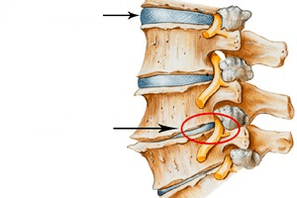
- The first and second departments: the sensitivity of the back of the head, pain in the parietal and occipital region is broken;
- The third department: numbness of the neck in the field of pinch, impairment of language, sensitivity of the language;It happens very rarely;
- The fourth department: pain and numbness in the clavicle and/or shoulder, violations of the respiratory system, heart pain;
- Fifth section: shoulder pain, pain in the external surface of the shoulder, compromised sensitivity of the limbs;
- The sixth and seventh departments: pain in the neck, blade, forearm, back, lower back, impaired sensitivity of the hands, fingers;The most frequent defeat;
- The eighth department: neck pain, back, elbow, numbness of the small fingers of all the limbs, the blue of the legs and the brushes due to blood circulation disorders, the lack of sensitivity to the skin and gives it to the legs.
Diagnosis and treatment of cervical osteochondosis
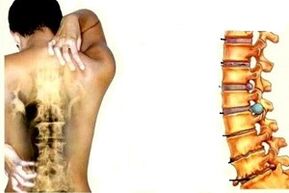
To reliably establish a diagnosis of "cervical osteochondrosis", it is necessary to consult a doctor.Many symptoms of osteocondrosis are similar to the signs of other diseases, so it is important not only to start treatment for osteochondrosis in time, but also not to lose other pathologies.
If osteochondrosis is suspected and there are signs of crushing the nerve endings, the doctor prescribes the X -ray;If the data are insufficient, magnetic or computerized resonance imaging, Doppler ultrasound and Duplex scan.
On the basis of the data of the research, the nature of the pain syndrome and the combination of other symptoms, it is possible to determine which discs are damaged and start the necessary treatment that will restore the vertebrae and the nerve roots affected and will prevent the development of complications of the osteocondrosis.
The treatment is prescribed by a doctor, it is usually complex.First of all, it should alleviate the symptoms of pain, which in the case of cervical osteochondrosis are sometimes almost unbearable and spread not only in the neck, but also to other parts of the body.
For this purpose, painkillers in tablets are used, but in case of too strong pain, nonsteroidal anti -inflammatory drugs are indicated, as well as heating and analgesic ointments.
Since drugs and ointments only relieve pain and other symptoms of osteochondosis of the neck, but not getting rid of its cause.After painful sensations are reduced, massages, physiotherapy and physiotherapy are prescribed to the patient.The patient shows a diet, drugs that improve blood circulation and support body functions, in tablets and injections, as well as chondroprotectors that help protect and restore the tissues of intervertebral discs.
In some cases, bathrooms, paraffin applications, reflexology, irudotherapy are prescribed as an additional treatment for the patient.Popular methods for the treatment of cervical osteochondosis often rapidly help the patient back to the usual lifestyle, but should be used in combination with traditional methods and after consulting a doctor, since traditional medicine can have contraindications and the use of its prescriptions can damage the body so weakened by the body.
Complications and disease prevention
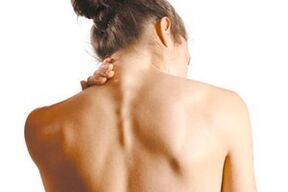
Do not forget: the treatment for cervical osteochondrosis should be started as quickly as possible.Further on visiting the doctor, the more difficult it will be to cure the disease and in the meantime it can cause various complications.The osteochondrosis of the cervical column is very dangerous as in this section there are many blood vessels and nerve complexes that feed the brain.
Any violation can cause problems with brain circulation, neurological disorders, including migraines and hypertension, influence the heart, the respiratory system, the hearing, the vision.
If osteochondrosis is launched, more serious consequences are possible in the form of cerebral ischemia, spinal stroke or radiculopathy - a disease in which processes are formed on the affected vertebrae, partially or completely depriving the body of sensitivity and mobility.But this is not the worst thing, since in severe osteochondrosis, the spinal cord is compressed, which can cause the patient's death.
Therefore, it is very important to listen to the symptoms as soon as possible and turn to a specialist who will help you return to a full life.And to avoid a disease such as cervical osteochondrosis, you need to move more, do not avoid physical activity, monitor weight, eat correctly and in a balance and also regularly visit an orthopedist or a vertebrologist.


























